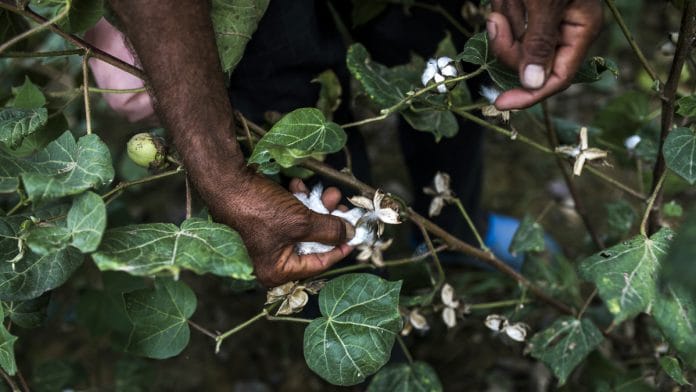The Narendra Modi government announced the imposition of a ban on export of wheat on 13 May 2022. Even though the ban exempted wheat exports for which irrevocable letters of credit had been obtained before 13 May. The notification by the Directorate General of Foreign Trade (DGFT) also mentioned that exports to foreign countries will not be covered by this ban if they are allowed by the Centre to meet the food security needs of importing countries.
In this article, we examine the government’s decision-making process behind the wheat export ban.
What information was given to govt?
It is widely acknowledged that due to the suddenness of the ban, there was chaos at the ports and the loading of ships and unloading of trucks came to a halt almost. After several days of disruption at the ports, the loading of wheat was resumed and a ship sailed to Egypt on 20 May.
However, hundreds of trucks carrying wheat are still waiting at Indian ports to unload.
How was the decision taken to ban the export?
While deciding on the ban, the Modi government may have taken note of high food inflation in April 2022: 8.8 per cent in wholesale price index and 8.4 per cent in consumer price index.
Till 2018, there used to be a Cabinet Committee on Prices for regular monitoring of prices. In March 2018, it was abolished and the Cabinet Committee on Economic Affairs (CCEA) was entrusted with the responsibility of price monitoring. After Parliament elections of 2021, eight committees of the Cabinet were constituted, but the one on prices was not restored.
At the official level, a group of secretaries of ministries of agriculture, commerce, food and public distribution and consumer affairs would have been surely advising the government on the poorer size of wheat crop and almost double-digit consumer price inflation in wheat.
It is not known if the information on lower crop size and rising prices, submitted to the ministers, was not adequate to convince them about the likely impact of unlimited export of wheat. The ministers would have also been getting different information from other sources that may have convinced them that the shortfall in wheat is not so serious as to attract any restrictions. This could be a reason for the statements of senior functionaries of the government about feeding the world (here and here) and request to World Trade Organization (WTO) to allow the export of wheat from central pool stocks. The shortfall in procurement and therefore lower central pool stocks would have been in the knowledge of ministers.
Also read: How food prices play out in India this year will depend on global inflation and local rains
Cotton shouldn’t meet same fate
It is not wheat alone that is experiencing high inflation. The prices of raw cotton, which is traded in mandis (Kapas), are almost double that of last year. While raw cotton exports this year are going to be only about half of 2021’s 78 lakh bales, the textile and garment industry is demanding restrictions and even a ban on cotton exports. In previous years, the Cotton Corporation of India (CCI) procured cotton from farmers at MSP and sold it to the textile industry. This year, CCI’s ability to intervene in the market is much lower.
One hopes that the CCEA would be looking at the complete picture of the cotton and textile industry so that a decision is not suddenly taken to ban exports. It is time for farmers to decide the crop they would like to grow in kharif 2022. A well-considered and thoughtful decision needs to be taken by CCEA to balance the interest of farmers and the textile industry, which provides employment to over 4.5 crore people directly and 6 crore people indirectly.
The case of the chana
On 16 August 2021, the Securities and Exchange Board of India (SEBI) suspended the launch of any new contract of chana (gram). Only a few days before that, on 11 August 2021, the Department of Agriculture and Farmers’ Welfare had released the fourth advance estimate of production for 2020-21. The production of chana, a rabi crop, was estimated to be 11.99 million tonnes, a little lower than the third advance estimates of 12.61 million tonnes.
The rabi crop was harvested in March-April 2022. The market prices have mostly remained below MSP and yet future contracts will remain suspended till December 2022.
Also read: Ban on wheat export is tyranny. It stops farmers from getting a windfall from higher prices
How to make policies
The examples of wheat, cotton and chana point to a complex interplay of weather, domestic and global factors due to which the market of agricultural commodities witness high volatility. Policy making based on Essential Commodities Act, future trading, import and export, therefore, requires constant monitoring and fine-tuning. Taking a proposal to CCEA easily takes at least two months as the draft note has to be circulated to concerned ministries and their comments have to be incorporated into the note. Most of the time, the decisions involve several ministries. In the past, delays in decision-making have adversely impacted farmers. For example, during the 2008 global food crisis, export of non-basmati rice was banned on 1 April 2008 following a series of restrictions on exports since October 2007. This ban was lifted finally in September 2011, after about three years.
In the interest of quick decision-making, an empowered group of ministers (e-GOM) needs to be entrusted with the responsibility to regularly monitor and fine-tune policies. A general principle is that most of the time, the landed cost of imported agricultural produce should never be lower than the MSP of domestic crop.
The presence of the finance minister in such e-GOM can expedite the process. The CCEA can subsequently be informed of the decision.
The author is co-promoter of Arcus Policy Research. He is a former Union Agriculture Secretary. Views are personal.






